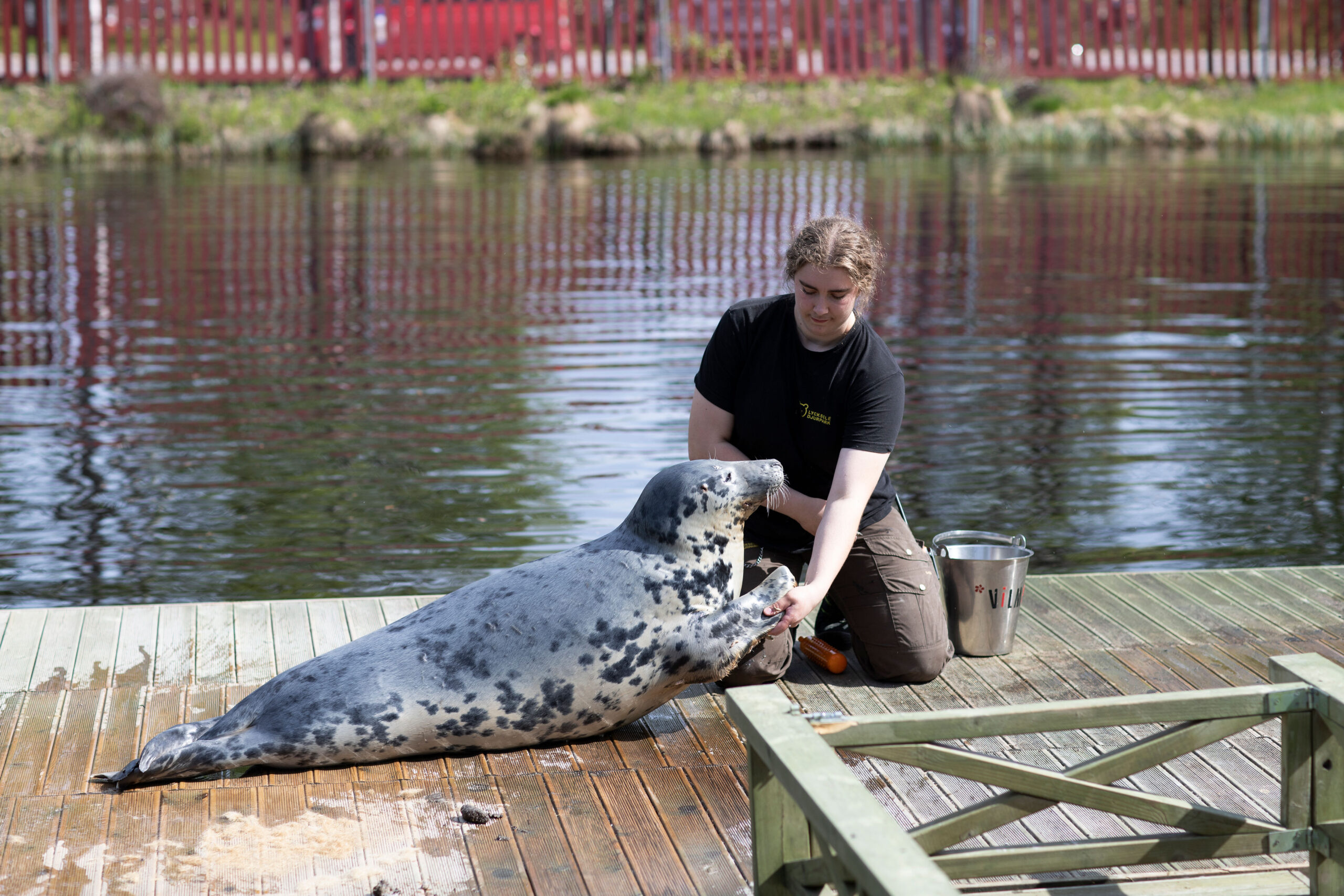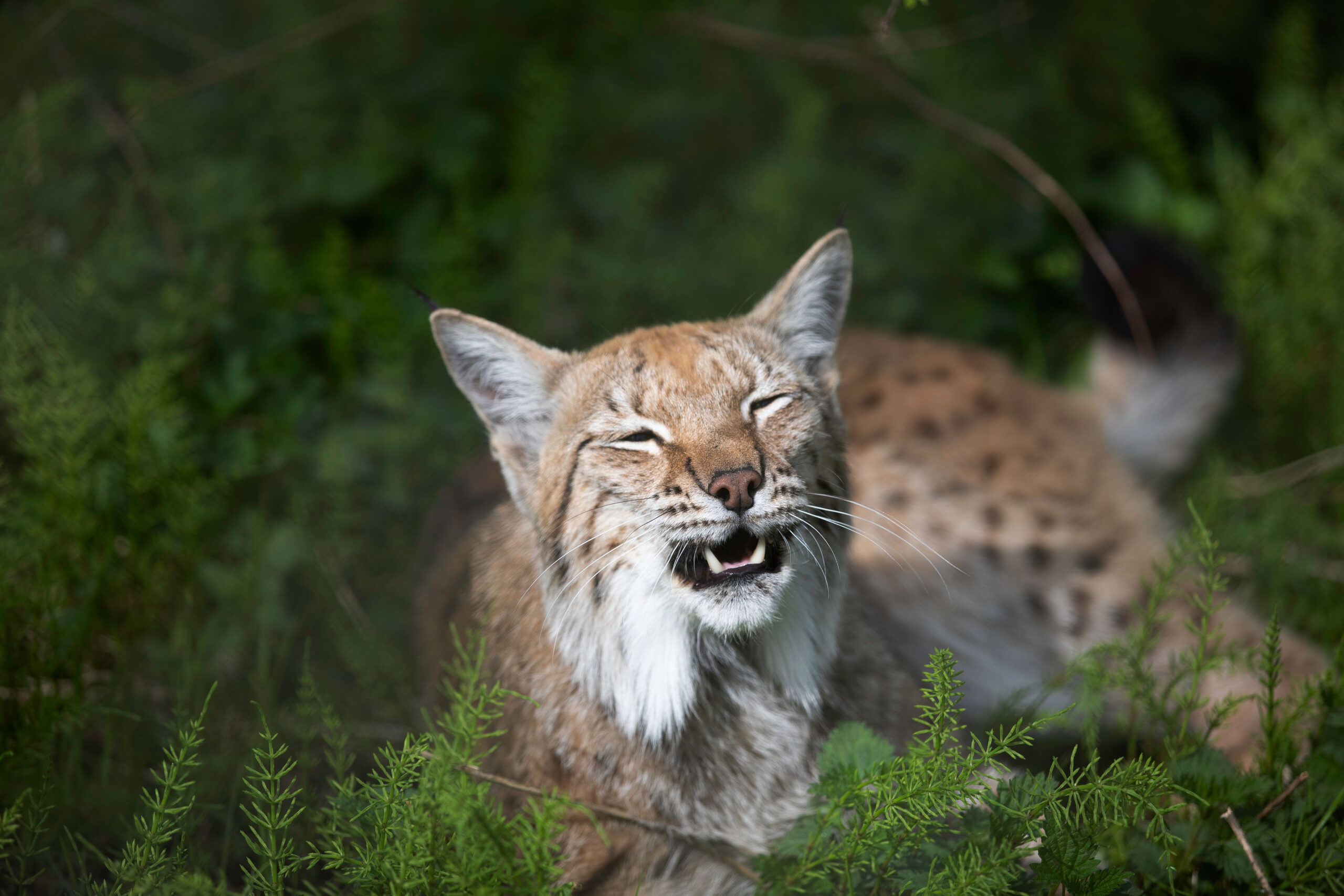Conservation
The increased threat to both animals and their natural habitats makes the work of zoos more important than ever
One of the main missions of the zoo is to contribute to the conservation of endangered species by participating in established conservation programs for different species. The work involves conserving endangered species, both in captivity and in the wild. The terms "in-situ" (in the wild) and "ex-situ" (outside the natural environment) are becoming increasingly common in conservation work.
To keep the genetic health of zoo populations stable over time, extensive collaboration between zoos is required, nationally, internationally, and even globally. Lycksele Zoo is part of a larger network through its membership in the Swedish Association of Zoos and Aquaria (SDF) as well as the European Association of Zoos and Aquaria (EAZA). The members of these organizations collaborate to plan for and manage the populations of species held in zoos. The global cooperation among zoos has led to zoo-bred animals strengthening or completely restoring wild populations of various species. The work is benefited by the fact that member parks are active participants in the international database Species360. We naturally contribute to sharing collective knowledge about our species in Species360 and thereby maintain international contacts for conservation work.
In an ideal world, zoos would not be needed. However, with one-third of all animal and plant species facing a high risk of extinction within this century, the need for zoos and other conservation institutions around the world is greater than ever before. The populations of wild vertebrates - mammals, fish, birds, amphibians, and reptiles - have decreased by an average of 69% between 1970 and 2018, according to WWF's Living Planet Report 2022, which examines the state of the planet.
One plan approach
The global conservation organization IUCN (International Union for Conservation of Nature) is an essential partner for zoo organizations due to the threat to the survival of many of the species that zoos work with. The conservation programs for zoo species are closely linked to what happens with their counterparts in the wild. IUCN sees zoos as an invaluable partner in the work to save endangered species and habitats. To integrate ex-situ and in-situ conservation, IUCN advocates for "the One plan approach," where it is ultimately desirable for all species to have a global conservation strategy that includes all measures carried out for the species in zoos and in the field.
EAZA's conservation programs.
Currently, around 400 different species ranging from insects to mammals are covered by EAZA's various conservation programs. For species that do not have a program but where there is a certain need for overview, monitoring is carried out.
ESB (European studbook)
The ESB (European studbook) programs entail that the species have a European studbook. Each studbook has a studbook keeper responsible for registering births, deaths, movements, and similar activities within the European zoos for the specified species. Recommendations for movements are based on studbook analyses performed by the studbook keeper. These analyses show which individuals are best suited to mate with each other to maintain the highest possible genetic variation. It is desired and strongly recommended by EAZA to follow the studbook keeper's suggestions, but it is not a requirement.
The following species in Lycksele Zoo are included in ESB:
Brown Bear
Lynx
Gray Seal
EEP
The EEP programs are governed by species coordinators who are also assisted by an EEP committee. The species coordinators are responsible for collecting information on all individuals within the species, maintaining a studbook, conducting genetic analyses on the studbook, and developing a long-term action plan for the species. For critically endangered species, this work is done in close consultation with conservation organizations such as IUCN. The EEP programs are more intensive programs for species conservation than ESB, and recommendations for the movement of animals must be followed.
The following species in Lycksele Zoo are included in EEP:
European bison*
Musk Ox*
Forest Reindeer*
Wolf*
Otter
Wolverine
* = The EEP programs designed according to the new EAZA Ex-Situ program model.
Monitoring
Monitoring, or surveillance, of a species can be conducted to assess whether it requires stronger conservation efforts, but also to monitor whether the number of individuals of the species is decreasing in member parks. Several of the species in Lycksele Zoo are important for educational purposes nationally but do not have a conservation purpose. Therefore, it is recommended across Europe that they be replaced with more endangered species or phased out entirely. However, displaying and disseminating information about Nordic species is one of Lycksele Zoo's main missions, and these species are considered important to maintain.
Heritage breeds
We strive to maintain a variety of domesticated animals that are part of national conservation projects, known as gene banks. Examples of associations that operate these gene banks and of which Lycksele Zoo is a member are the Swedish Landfowl Club and the Association for Allmoge Cattle. The goal is for these associations to work with gene banks or equivalent systems to preserve, protect, and conserve whole or parts of Swedish landraces.
The following heritage breeds in Lycksele Zoo are included in the gene bank:
Bjurholm chicken.
Lapp goat
Jämt goat
Conservation efforts in-situ
Muskox 2030
Lycksele Zoo has contributed to the establishment of Musk Ox 2030, an interest network for the conservation of musk oxen in Sweden. We have provided funding and workforce for the feasibility study "Musk Ox 2030 - a feasibility study on the future of a charismatic species in our nature" with the aim of initiating a creative discussion on how we will manage and preserve our musk oxen in the future. This has resulted in a two-day workshop in Tännäs with other stakeholders and a seminar held at Järvzoo for two days in November 2021. In addition to the actors behind the network, the Swedish Environmental Protection Agency and other stakeholders were also invited. After a good dialogue, the hope is to develop a concrete action plan for our wild musk oxen in the coming years.
The Eagle Owl Project
We have initiated a dialogue with Berguv Nord to contribute to the conservation of the Eurasian eagle-owl as it is on the verge of disappearing from northern Sweden. The goal is to build a breeding aviary for the species and to obtain permission for the release of any offspring that may be born. Contacts and initial discussions have been made with other institutions that keep the species to explore potential areas of collaboration and strategies for potential releases. This is to be able to monitor the progress of the released individuals, but also to release individuals in areas suitable for the purpose.

Our mission
More and more animal species in the world are threatened with extinction today, and the list of species at risk of dying out is only getting longer and longer. We can do a lot to help and ensure their survival.
You help us with our mission.
Every time you visit us, buy something in the park, or sponsor us, you help us with our mission. Together, we can make a big difference!

